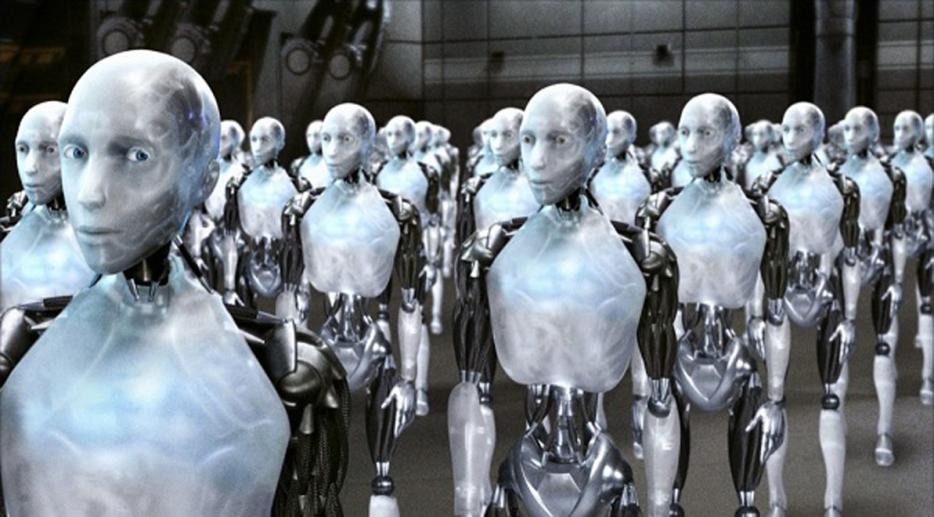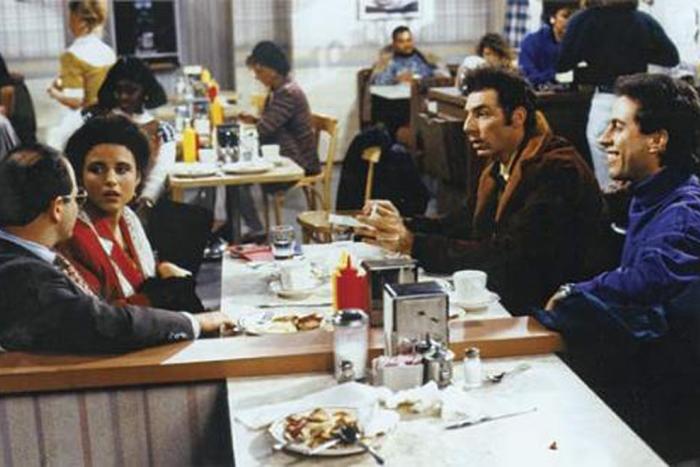So far, the only robotic co-worker I’ve ever had was the robot mail-deliverer at the CBC. It zooted around delivering mail from floor to floor, and when I ran into it in the hallways I’d flatten myself against the wall and hope its sensors or X-ray vision or whatever would tell it not to run me over. It didn’t have a human-like shape—it was just sort of a steel box on wheels—so I didn’t feel obliged to make small-talk about the weather or compliment its outfit. I would describe my emotional reaction to it as “mildly weirded out.”
A new study in the journal Applied Ergonomics, conducted by Jihong Hwang of Seoul National University, Taezoon Park of Singapore’s Nanyang Technological University, and Wonil Hwang of Korea’s Soongsil University, examines how a robot’s body shape affects both our emotional response and our perception of the ‘bot’s personality.
Engineers have been working on more sophisticated robotic workers for years; a Japanese research team came up with the first proto-roboceptionist in 2001, and Carnegie Mellon installed Valerie, the “roboceptionist with a personality” in 2004. I don’t know if she “sings cheerful songs,” like Japan’s bright yellow Wakamaru model promises to do, but she’s blond, so there’s that. Hwang et al. also point to the growing use of nursing robots, teacher robots, and entertainment robots in theme parks; as companion robots for seniors or autistic children become more common, robots are starting to do more of our affective work for us. The trick is to avoid the Uncanny Valley—the point at which a robot’s resemblance to a human is too eerie. It’s tough to do, because up to a certain point, people like humanoid robots, and the number of factors that may be creeping people out are enough to make any robot neurotic—”Is it my face? My voice? The way I’m sitting ramrod straight at my desk?”
Hwang et al. focus on one specific aspect of robot design, which is the contour of the trunk, head, and limbs. The first shape they investigated is rectangular-parallelepiped, which is what you look like if you dress up as a robot for Halloween by cutting holes in some cardboard boxes. Then there’s cylindrical, which looks like a sanded-down version of that costume. Then “human-like,” which sort of looks like a dressmaker’s mannequin or a marionette, with a smooth faceless head and nipped-in waist.
The researchers made 27 models with all possible combinations of shapes (e.g., a cylindrical head with a boxy trunk and human-like limbs) and brought in 20 university students between the ages of 20 and 26, with an even number of men and women, to look at them. Borrowing a concept from psychology, the researchers asked the students to ascribe to each of the robots one of the Big Five personality traits: extraversion, agreeableness, conscientiousness, neuroticism, and openness. They also asked the students to score their own reactions to the robots, shading from concerned (comprising things like fear, embarrassment, feeling overwhelmed), to enjoyable (excited, interested, amused), to favourable (relaxed, trusting, aesthetically pleased).
According to the students’ responses, if you want to make a robot look calm and soothing, like a reassuring nurse, your best choice is the sanded-down look: cylindrical limbs, trunk, and head. For an extroverted robot—the chatty receptionist type—you want a cylindrical head with human-like trunk and limbs. If you would rather your robot quit yapping and focus on the task at hand, the most conscientious-looking robot has a nipped-in, human-like trunk, but cylindrical head and limbs. In almost every permutation, the cardboard-box robot aroused negative emotions (so maybe not a good costume choice if you’re hoping to hook up) (for so many reasons). And the human-like head didn’t do much better, being positively perceived only when paired with a human-like trunk and cylindrical arms.
When I read about these things, I can never tell whether I’m glad they’re working this stuff out or not. Should I be looking forward to the day when I do have to ask the robot mailman how he’s liking the weather and say what a nice cylindrical jacket he’s wearing? I’m not sure how I feel about that, although if there are going to be roboceptionists at every doctor’s office, I would rather they not be terrifying.
And it’s reassuring to know that we don’t just limit our stereotyping to humans—robots get judged on how they look, too. It isn’t a robot’s fault that its head looks like a cardboard box, just like having a receding hairline or weird ears isn’t a human’s fault. I hope that after this study, the robots rejected for their ungainly bodies and creepy heads found someone to hug them and say that no matter what anyone says, their machinery is beautiful on the inside.






